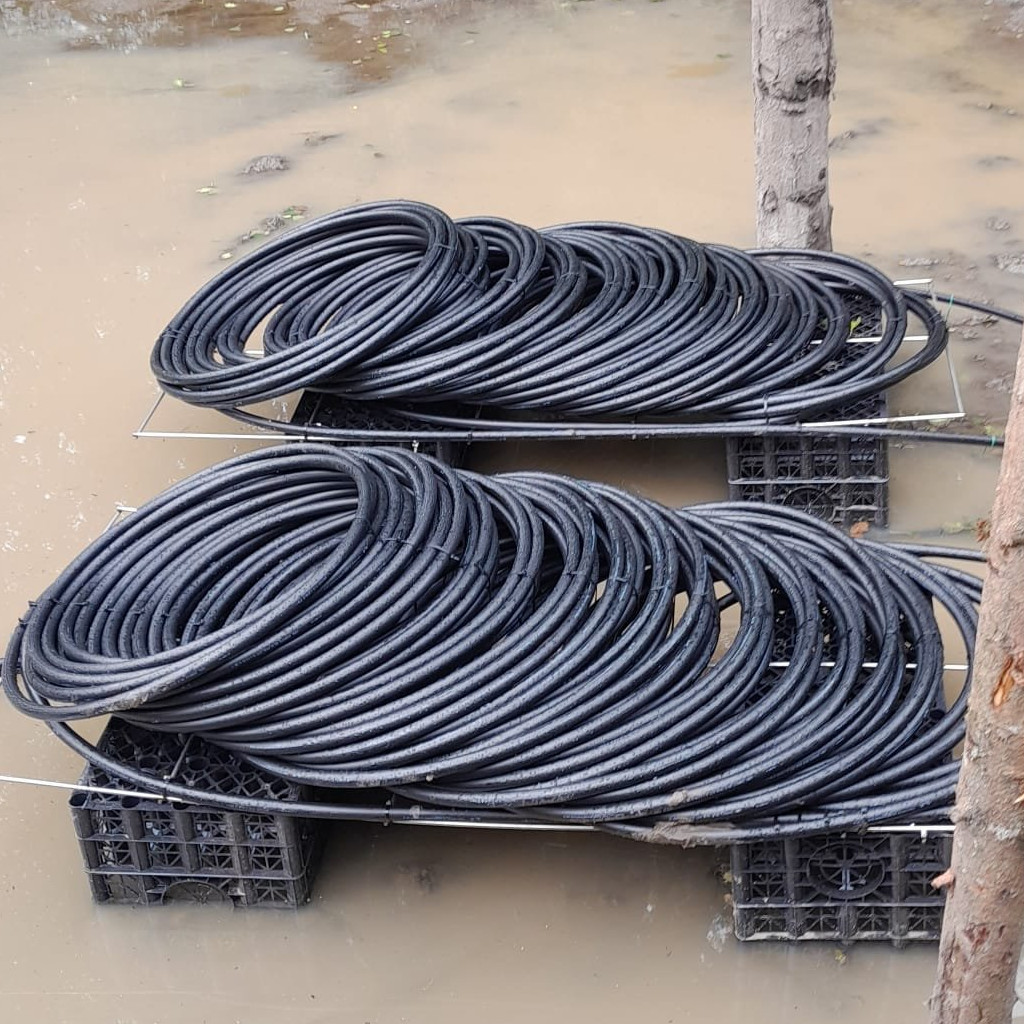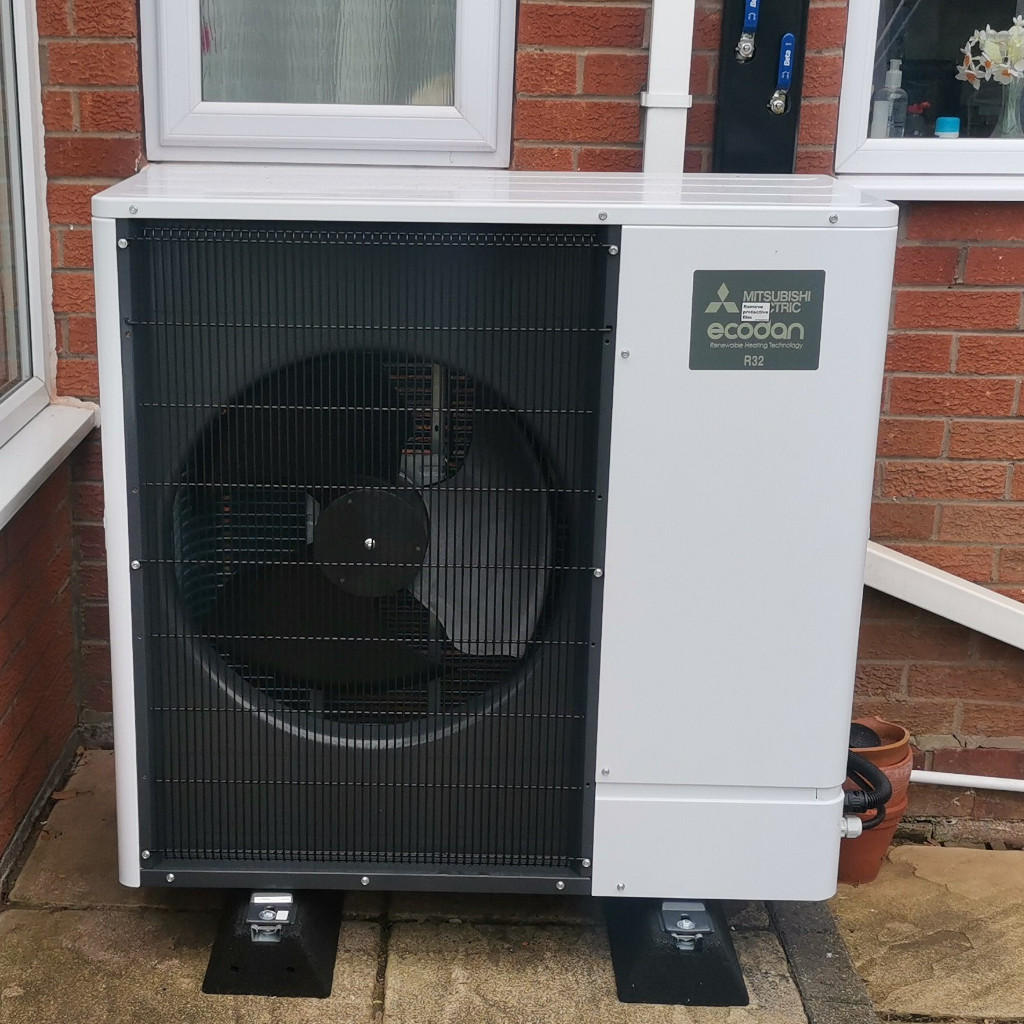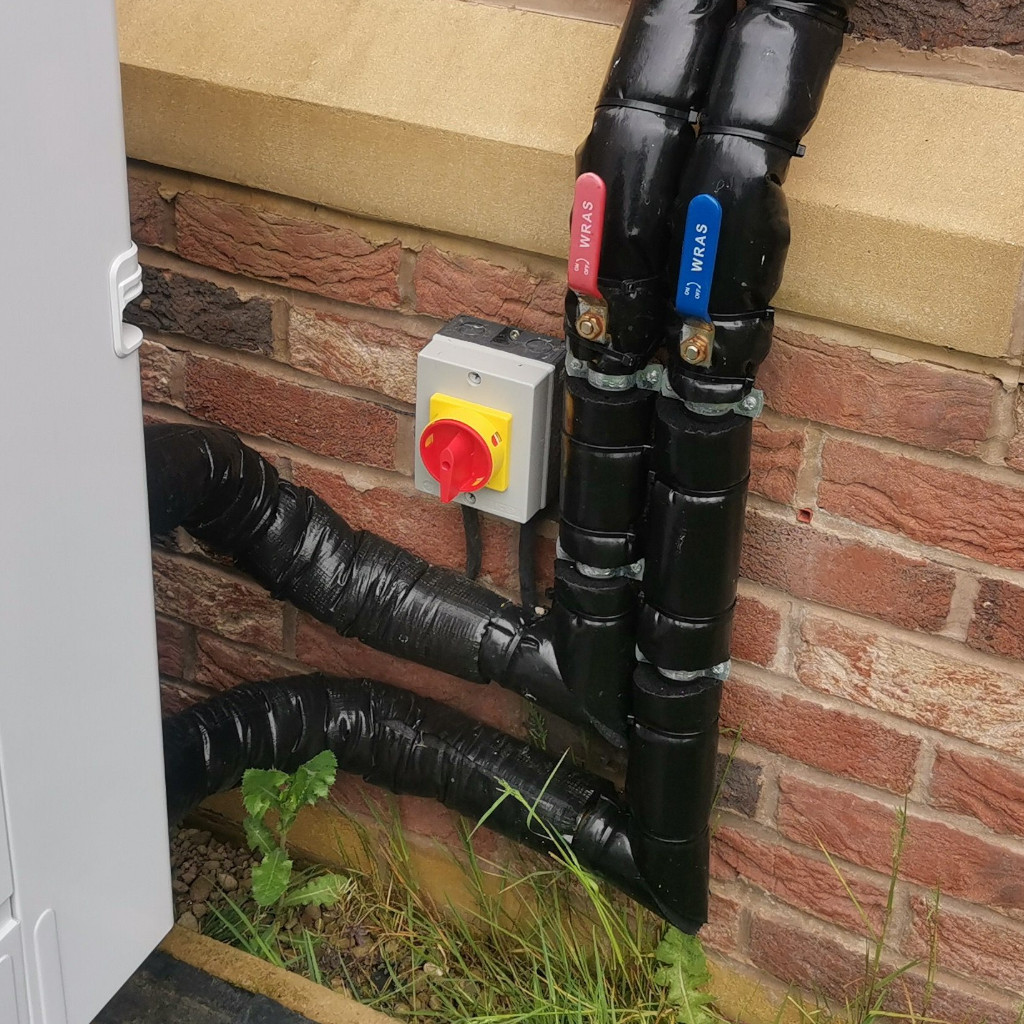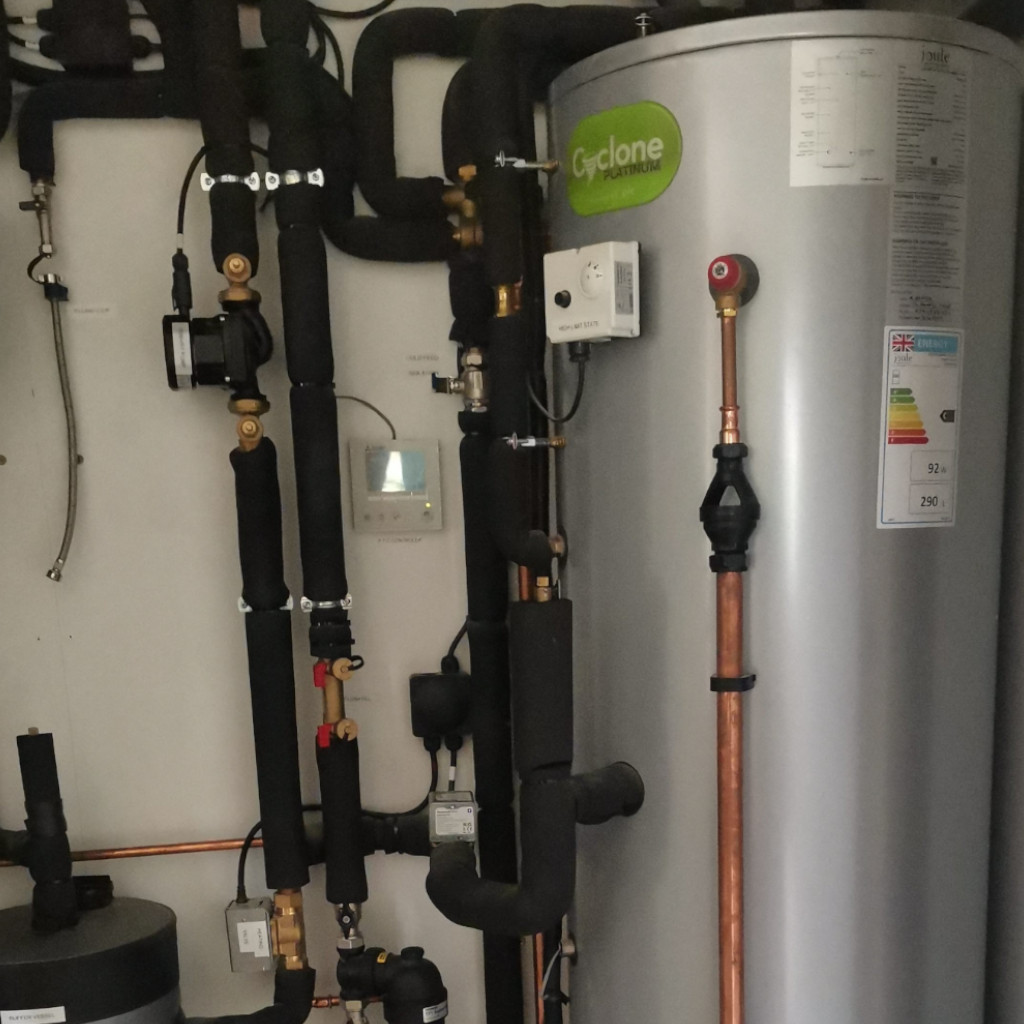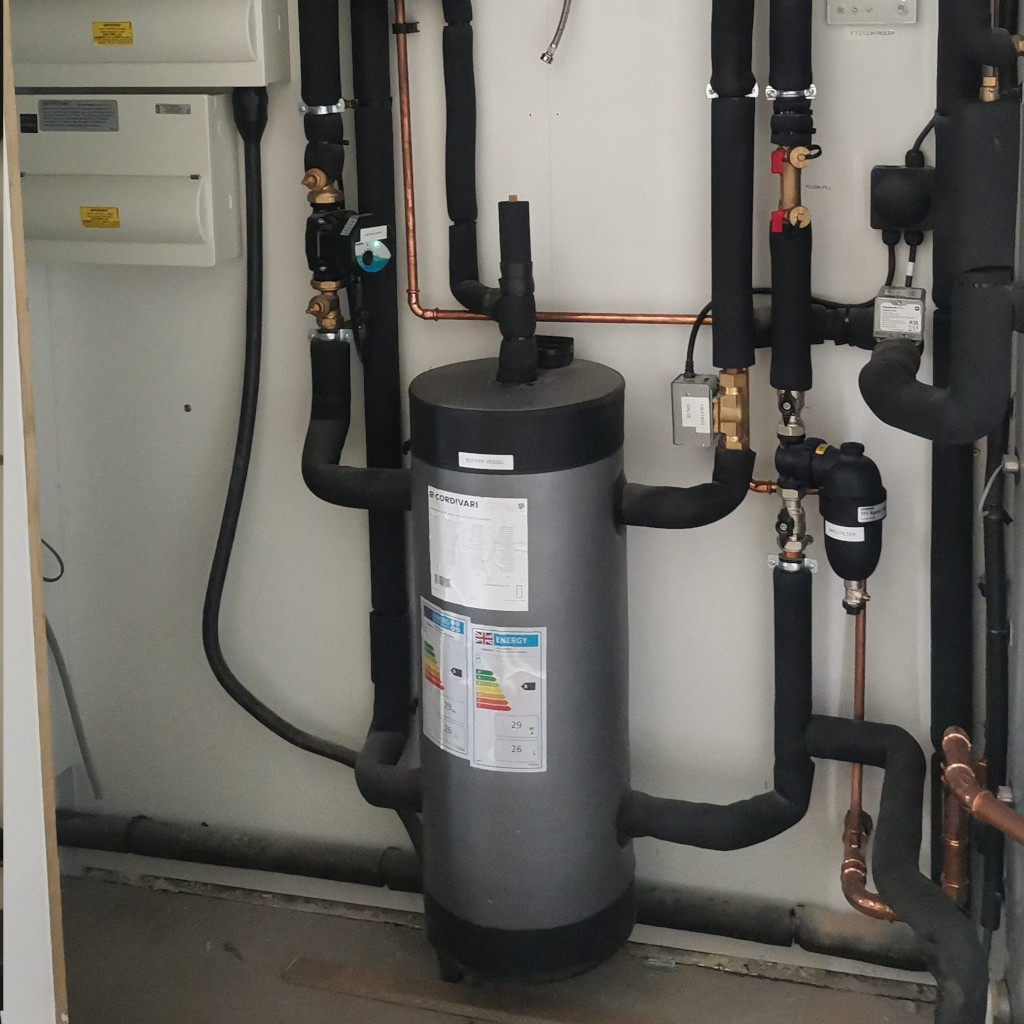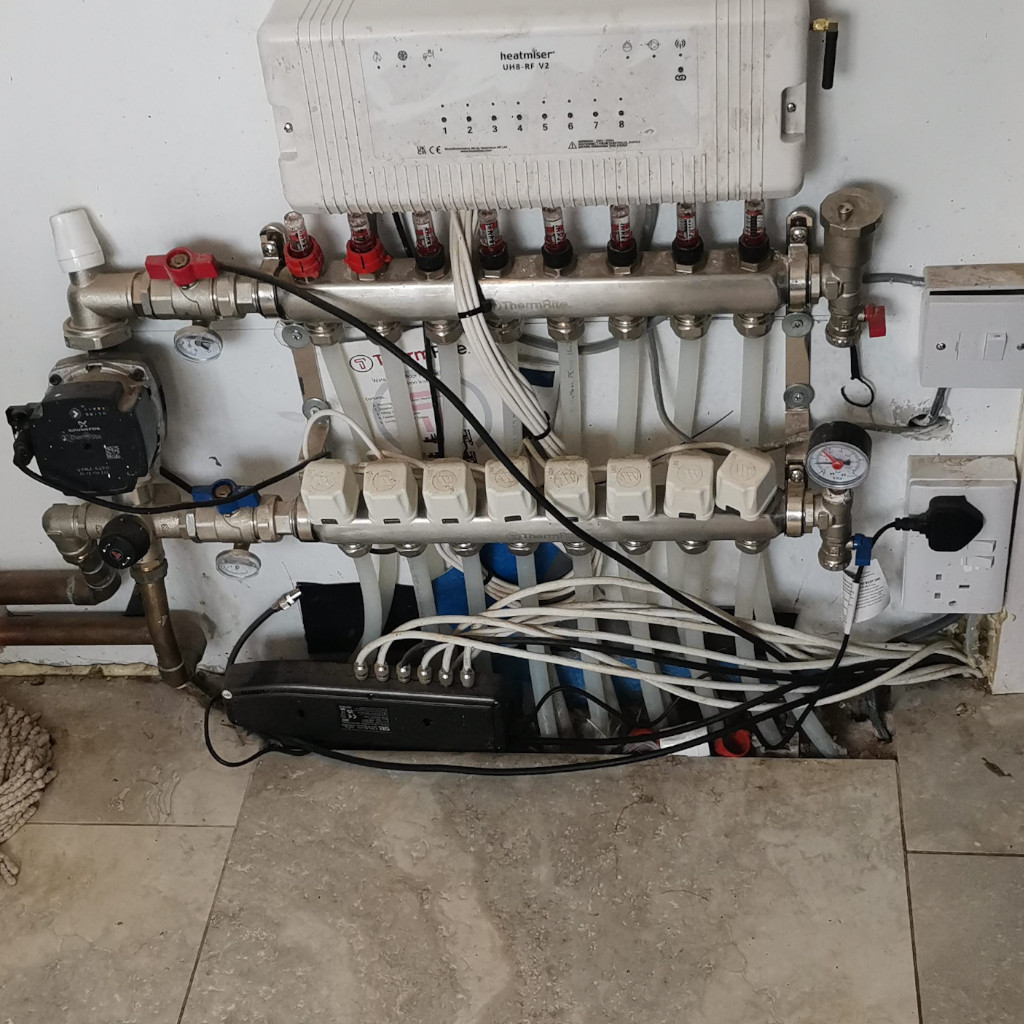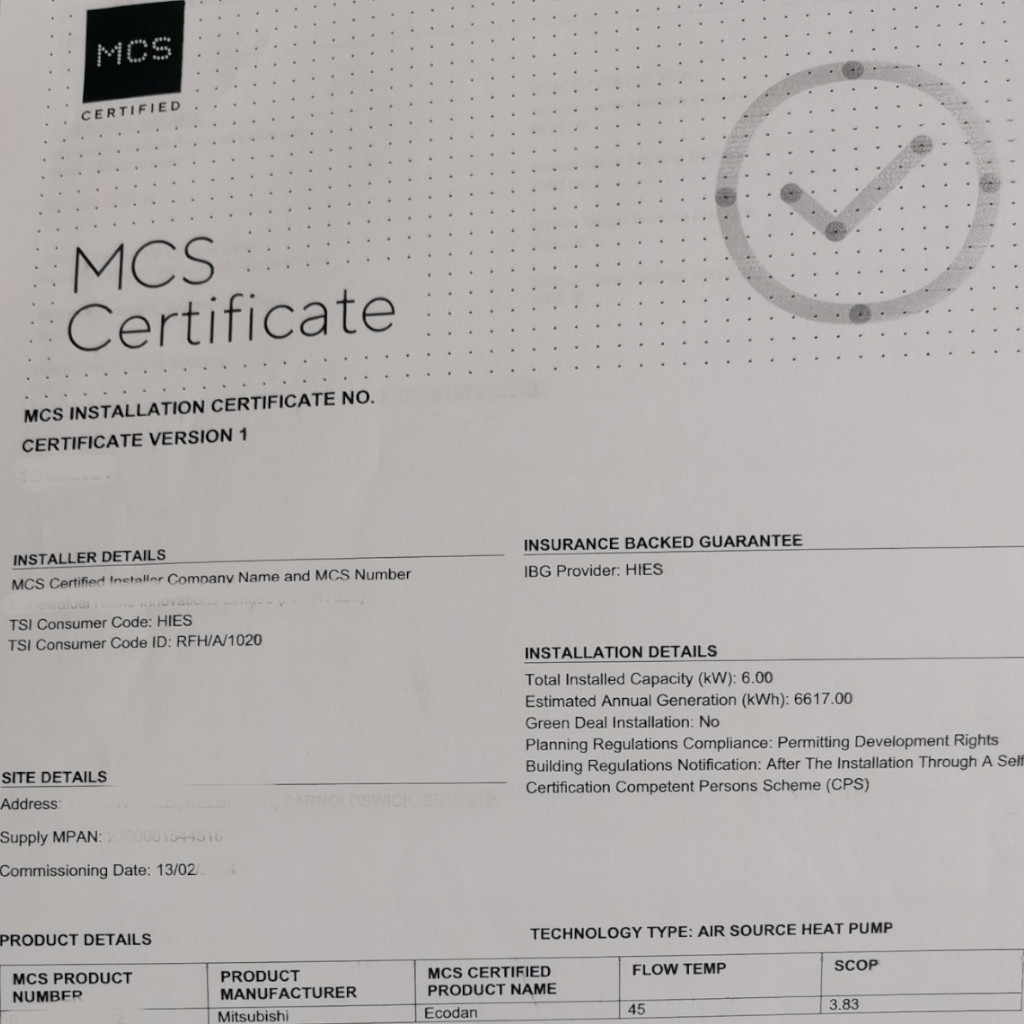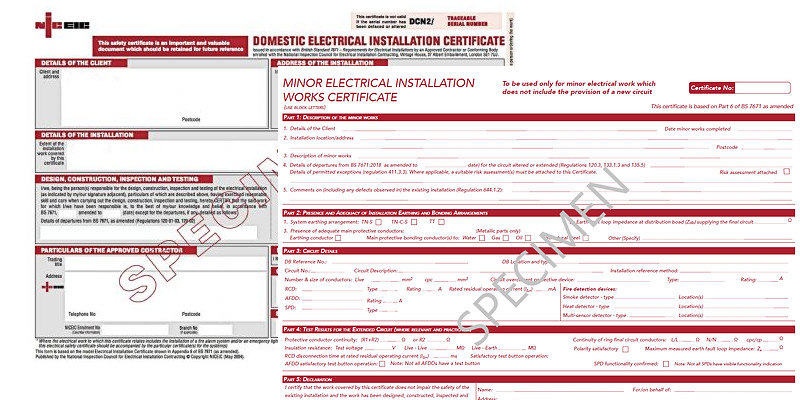Heat pump Basics.
If you’re considering replacing your current heating and hot water system with a renewable alternative, it’s essential to be aware that this can be a significant investment. In many cases, it involves a partial or complete system upgrade, as heat emitters often (though not always) need to be updated to achieve optimal flow rates. To determine if a heat pump is suitable for your property, you can consult the UK government’s suitability guide. The MCS best practice is here.
The primary types of heat pumps used in the UK include:
ASHP: Air Source Heat Pumps.
WSHP: Water Source Heat Pumps.
GSHP: Ground Source Heat Pumps.
A hybrid system is another option to consider, where a fossil fuel-powered boiler (like gas) works alongside a heat pump. This setup can help meet increased heating demands during the colder winter months while still reducing overall reliance on non-renewable energy sources.
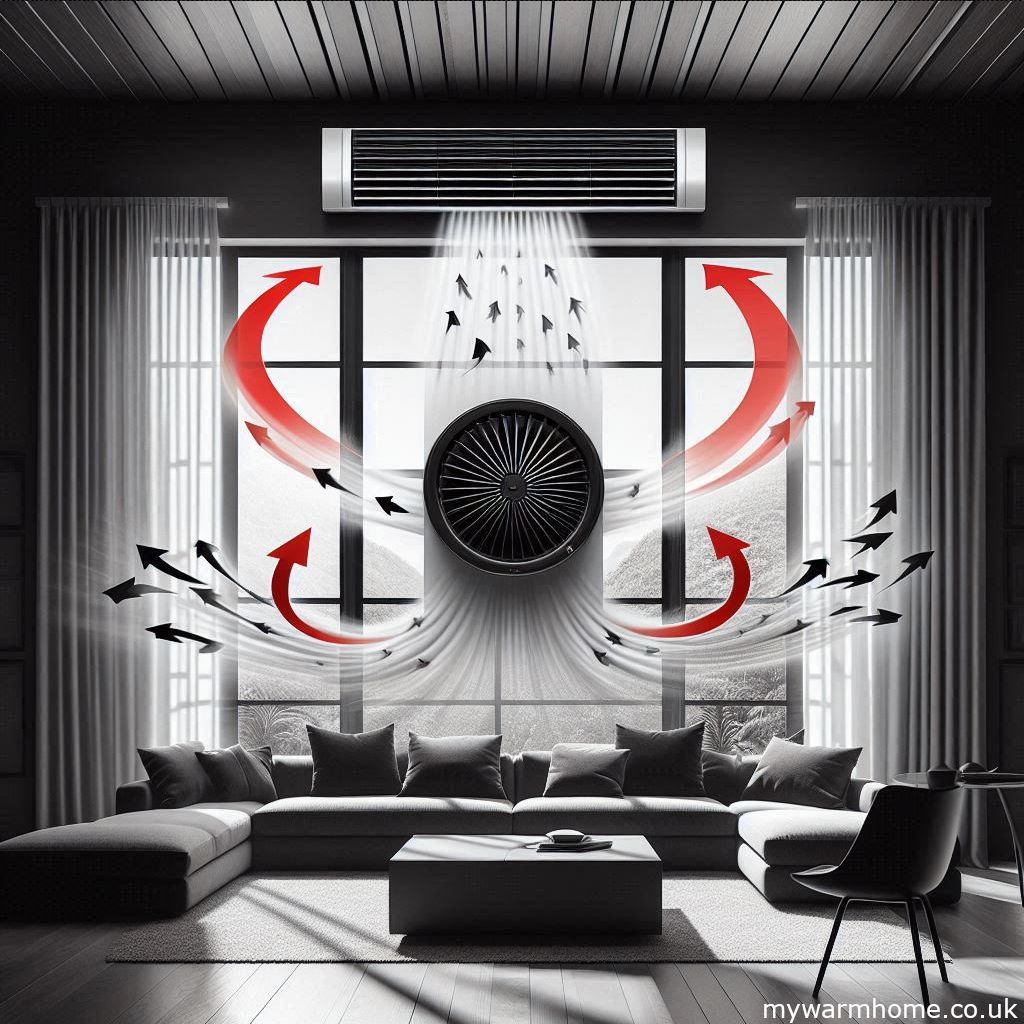
How Heat Pumps Work.
Heat pumps don’t generate heat — they move it. They take warmth from the air, ground, or water and bring it into your home using a clever refrigeration cycle (a bit like a fridge that removes heat from the food but working in reverse).
The Different Types of Heat Pumps.
Although all heat pumps work on the same principle, they collect heat in different ways:
Air Source Heat Pumps (ASHP)
These draw heat from the outside air using a unit that looks similar to an air conditioner — because it almost is one, just working the other way around.Water Source Heat Pumps (WSHP)
These collect heat through coils or mats placed under the surface of a pond, lake, or river.Ground Source Heat Pumps (GSHP)
These use long loops of pipe buried in the ground — either horizontally about 2 metres deep or vertically down boreholes reaching around 100 metres.
Once the heat is gathered, it’s transferred into your home through radiators, underfloor heating or blower units, depending on your home’s design and comfort preference.
Video from Octopus Energy
This technology is new to many of us, and it needs to be used a little differently.
During the heating season, it’s best to control your home’s temperature rather than demand it. In other words, let the system maintain a steady temperature instead of turning it off and on all the time. It’s more efficient (and cheaper) to let the heat pump gently adjust the temperature up or down.
Most modern systems use outdoor temperature sensors to help with this. These sensors measure the air temperature outside and tell the heat pump how much heat your home is likely to need. On mild days, the system runs at a lower level; when it’s colder, it automatically increases output. This helps your heat pump work in tune with the weather — keeping your home comfortable while using less energy overall.
Things to consider ASHP (other heat pumps in main section)
Position. Away from sleeping and noise-sensitive areas. (newer ASHPs are very quiet).
Making sure the area around the heat pump is to manufacturers guidance to allow optimum airflow and service needs.
Condensation removal. Water will come from the unit and can pool. It’s not the same as gas boiler condensate, which can be acidic, so just basic removal to soak away or drain, depending on the manufacturer’s instructions.
Radiator sizes and pipework. Heat pumps work at lower temperatures, so a bigger surface area, ideally underfloor heating, is beneficial. (see delta T in main section)
Insulation of property. The better the wall and loft (or room in roof) insulation, the less heat loss.
Uninsulated pipework. Bathroom supplies and central heating pipework at the plant should all be insulated. All external pipework should be insulated with a class 0 UV protected insulation.
Maintenance requirements. How regular servicing is required and access requirements.
Running costs. What is the average yearly cost to run the heat pump! This can be really important, and research and information from your installer is a must.
Solar matching. As heat pumps operate differently through the seasons, the same goes for solar. If you are having solar PV installed thinking the panels will run the heat pump, then think again. You could try to match the solar generation to the heat pumps output, which could help with running costs.
Understanding Heat Pump Efficiency: SCOP and COP.
When looking at heat pumps, you’ll often see the terms COP and SCOP. These are simply ways of measuring how efficiently your system turns electricity into heat.
COP — Coefficient of Performance.
Measures efficiency at one moment in time — usually in perfect test conditions.
For example, a COP of 4 means that for every 1 unit of electricity the heat pump uses, it provides 4 units of heat.
However, real life isn’t always perfect — temperatures change, systems switch on and off, and conditions vary throughout the year. That’s where SCOP comes in.
SCOP — Seasonal Coefficient of Performance.
Gives a more realistic picture of your heat pump’s efficiency over an entire heating season.
It takes into account:
Changing outdoor temperatures as the weather warms and cools.
Energy used during standby and defrost cycles.
How efficiently the system runs at different power levels.
In short, SCOP tells you how efficient your heat pump is across the whole year, not just in ideal lab conditions.
How is SCOP Is Calculated?
SCOP compares how much heat energy your system produces with how much electricity it uses:
SCOP = Total Heat Output ÷ Total Electricity Used
Example
If your heat pump has a SCOP of 4, that means for every 1 kWh of electricity it uses, it provides 4 kWh of heat.
That’s why people often say a heat pump can be “400% efficient” — it’s not creating energy, just moving it very efficiently.
Privately installed or funded?
For any renewable heating project, whether funded privately or through a UK grant scheme, the current best practices, manufacturer’s instructions and relevant building regulations should be strictly adhered to.
If installed on a UK grant scheme then a quality assurance program that certifies small-scale renewable energy systems and installers need to be followed, currently this is called MCS if insulation is being carried out at the same time and as part of the funding then it must meet the current PAS.
Most of the time when applying for renewable funding the installation company usually has the mechanism to set up the funding and this should be explained from the start. You should NOT have to pay anything upfront or post install unless extras are quoted and agreed. These extras could be, for instance, larger capacity water heating, radiators as required, location requirements etc.
Currently, the funding streams come from the following. These links are directly to Ofgem, UK government and group buying sites. Have a look at the grant area of the site for more information.
An insurance backed guarantee is required for ECO measures and is mandatory for those installing insulation through government schemes.
TrustMark registered businesses are also required to provide financial protection to their customers.
Once agreed on funding, the installation company will arrange for a property assessment.
Installation Guide.
The manufacturer’s instructions will highlight any regulations that are required. Currently, all electrical regulations need to be followed and documented, as is the MCS checklists if installed on government scheme. Requirements are that properties are well insulated prior to the installation (fabric first approach) and full heat loss calculations are carried out to provide information to install the system to best practice. If hot water is being heated in storage tanks by the heat pump then steps need to be taken to protect from legionella. Stored hot water systems connected to heat pumps have cycles to heat the water at given times and a given temperature to stop the growth of Legionella bacteria.
Electrical certificates.
The two types of electrical certificates you will come across as a customer who is having any electrical work as part of installing EEM’s (energy efficient measures)
- Electrical Installation.
- Minor Works Certificate.
Electrical Installation Certificate.
An electrical installation certificate is the type of certificate a customer receives after an electrician has installed one or more new circuits. Other examples include a complete rewire, a replacement consumer unit or an additional consumer unit. Generally, any time electrical work is done at the consumer unit, a new installation certificate will be issued.
Minor Works Certificate.
A minor works certificate is issued after an electrician has made an alteration to an existing circuit. Minor works certificates are often used to certify work such as adding additional sockets to an existing circuit or increasing the number of light fittings in a room. It can also be where a fused spur has been installed for an appliance or boiler connection.

